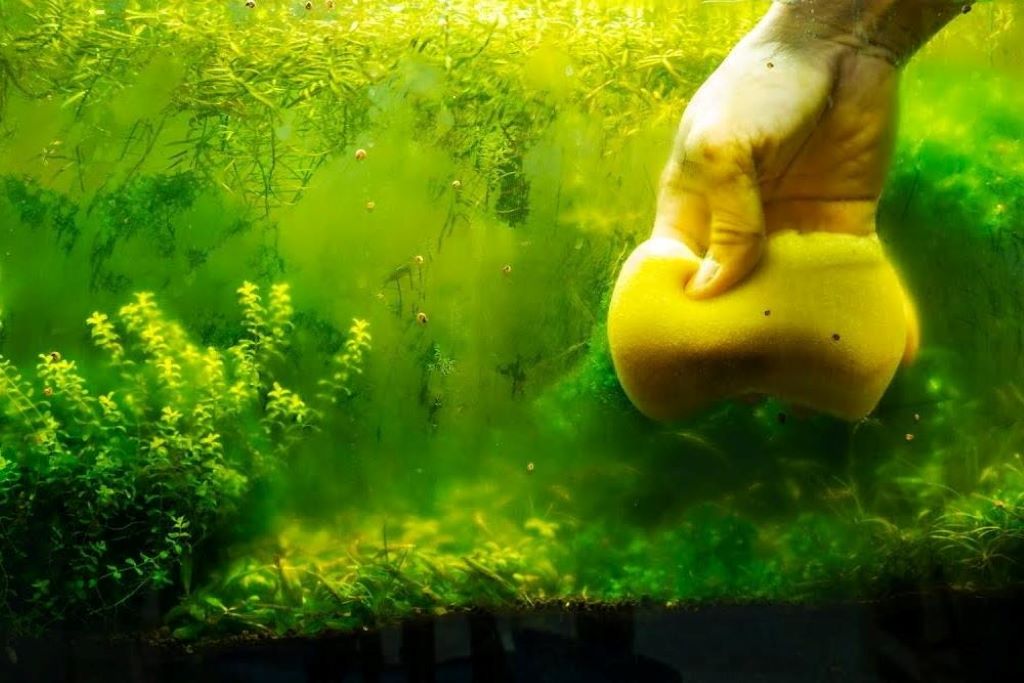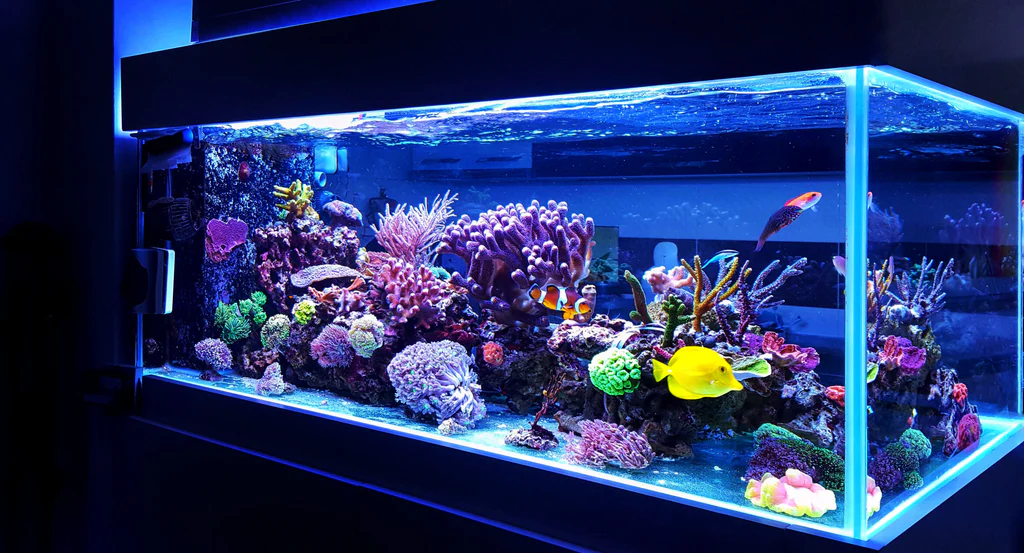A Comprehensive Guide to Keeping Your Aquarium Crystal Clear
The mesmerizing dance of aquatic life in a freshwater aquarium brings joy and tranquility to any space. But the serenity can quickly fade when a sinister green monster emerges: algae. This unwelcome guest can cloud the water, smother plants, and even harm your fish. While algae is a natural part of any aquatic ecosystem, excessive growth signals an imbalance that needs addressing. Implementing natural algae control methods can help maintain harmony in your aquarium, ensuring a healthy environment for all its inhabitants. This strategic process of identifying, assessing, and developing skills to align with both present and future career goals mirrors the careful balance required to manage an aquatic ecosystem.
Before you reach for harsh chemicals, consider the power of nature itself. This comprehensive guide explores natural algae control methods for freshwater tanks, offering insights into their pros, cons, and real-world effectiveness. We’ll also delve into frequently asked questions and provide a holistic approach to maintaining a healthy, algae-free aquarium.
Understanding the Enemy: Why Does Algae Grow?
To effectively combat algae, it’s crucial to understand what fuels its growth. Algae, like any living organism, needs nutrients and light to thrive. Excessive light, particularly direct sunlight, and an overabundance of nutrients like nitrates and phosphates create a perfect breeding ground for these unwanted guests. Overfeeding, infrequent water changes, and overcrowding can all contribute to nutrient overload.
Natural Algae Control Methods: Harnessing Nature’s Power
-
Live Plants: The Green Army
Introducing live aquatic plants is like deploying a green army against algae. Plants compete with algae for nutrients and light, effectively starving them out. Fast-growing species like Java Fern, Hornwort, and Water Sprite are particularly effective.
Pros:
- Aesthetically pleasing: Live plants enhance the beauty of your aquarium, creating a natural and vibrant environment.
- Improved water quality: Plants absorb harmful nitrates and phosphates, contributing to a healthier ecosystem for your fish.
- Oxygenation: Plants release oxygen during photosynthesis, benefiting your fish.
Cons:
- Maintenance: Some plants require regular trimming and care.
- Initial investment: Setting up a planted tank can be more expensive initially.
- Compatibility: Not all plants are suitable for all aquariums; research is essential.
Reviews:
- “Adding live plants was a game-changer for my tank! The algae growth significantly reduced, and my fish seem happier in the lush environment.” – Sarah J.
- “I was hesitant at first, but the results are undeniable. My planted tank is thriving, and algae is no longer a problem.” – Mark L.
-
Algae Eaters: The Clean-Up Crew
Certain fish and invertebrates are natural algae grazers, making them valuable allies in your fight against unwanted growth. Popular algae eaters include:
- Siamese Algae Eaters: These tireless workers are known for their voracious appetite for various types of algae, including black beard algae, which can be challenging to control.
- Otocinclus Catfish: These small, peaceful catfish are excellent at cleaning algae from plant leaves and aquarium glass.
- Amano Shrimp: These diligent scavengers are particularly effective at controlling hair algae and biofilm.
- Nerite Snails: These snails are known for their algae-grazing abilities and their preference for hard surfaces like rocks and driftwood.
Pros:
- Natural and efficient: Algae eaters provide continuous and targeted algae control.
- Adds to biodiversity: Introducing different species can create a more interesting and dynamic aquarium environment.
Cons:
- Overgrazing: In small tanks or with limited algae growth, algae eaters may need supplemental feeding.
- Compatibility: Ensure the chosen species are compatible with your existing fish and invertebrates.
- Effectiveness varies: Not all algae eaters consume all types of algae.
Reviews:
- “My Siamese Algae Eaters have done wonders for my tank! They keep the algae at bay and are fun to watch.” – David P.
- “Amano shrimp are my go-to for algae control. They’re efficient and add a touch of life to the aquarium.” – Emily R.
-
Water Changes: Dilution is the Solution

Regular water changes are essential for maintaining a healthy aquarium and controlling algae growth. By replacing a portion of the water, you remove excess nutrients that fuel algae blooms. Aim for a 10-20% water change every week or two.
Pros:
- Simple and effective: Water changes are a fundamental aspect of aquarium maintenance and contribute to overall water quality.
- Cost-effective: This method requires no special equipment or expensive products.
Cons:
- Time commitment: Water changes require time and effort.
- Consistency is key: Regularity is crucial for optimal results.
Reviews:
- “Consistent water changes have made a huge difference in my tank’s clarity. It’s a simple but powerful method.” – John B.
- “I used to struggle with algae, but since I started doing regular water changes, it’s been much easier to manage.” – Lisa K.
-
Reduced Lighting: Dimming the Spotlight
Algae thrive in bright light, so reducing the duration and intensity of your aquarium lighting can help control their growth. Aim for 8-10 hours of light per day and avoid placing your tank in direct sunlight.
Pros:
- Easy to implement: Simply adjust your aquarium light timer or move the tank to a less sunny location.
- Benefits plants: A balanced light cycle promotes healthy plant growth.
Cons:
- May affect plant growth: Some plants require more light to thrive.
- Limited impact on certain algae: Some algae species can tolerate lower light conditions.
Reviews:
- “Reducing the lighting hours helped curb the algae growth in my tank without harming my plants.” – Michael S.
- “I noticed a significant difference in algae growth after moving my tank away from the window.” – Karen T.
-
UV Sterilizers: Zapping the Algae
UV sterilizers use ultraviolet light to kill algae spores and bacteria in the water, preventing them from multiplying. While effective, this method is more of a preventative measure than a cure for existing algae blooms.
Pros:
- Highly effective: UV sterilizers can significantly reduce algae growth and improve water clarity.
- Low maintenance: Once installed, UV sterilizers require minimal upkeep.
Cons:
- Cost: UV sterilizers can be expensive.
- May affect beneficial bacteria: Overuse can harm the beneficial bacteria in your filter.
Reviews:
- “Investing in a UV sterilizer was worth it! My tank has been crystal clear ever since.” – Robert G.
- “UV sterilization is a great way to prevent algae blooms, but it’s important to use it correctly.” – Jennifer H.
-
Barley Straw: Nature’s Algae Inhibitor
Barley straw is a natural and surprisingly effective algae control method. As barley straw decomposes in water, it releases substances that inhibit algae growth. You can add barley straw extract directly to your aquarium or place a barley straw pad in your filter.
Pros:
- Natural and safe: Barley straw is a natural product and poses no risk to fish or plants.
- Long-lasting: The effects of barley straw can last for several months.
Cons:
- Slow acting: It can take several weeks for barley straw to become effective.
- May cause temporary discoloration: Barley straw can initially tint the water slightly yellow.
Reviews:
- “Barley straw is a hidden gem for algae control! It’s natural, safe, and works wonders.” – Chris W.
- “I was skeptical at first, but barley straw really does help keep the algae under control.” – Jessica L.
A Holistic Approach: Combining Methods for Optimal Results
For the most effective algae control, consider combining different natural methods. For example, a planted tank with a few algae eaters and regular water changes creates a synergistic approach that tackles algae from multiple angles. Remember that consistency is key. Implementing these methods diligently and patiently will ultimately lead to a healthy, algae-free aquarium.
Popular FAQs: Addressing Your Concerns
-
Why is my tank suddenly experiencing an algae bloom?
Sudden algae blooms can be triggered by various factors, including changes in water parameters, increased lighting, overfeeding, or the introduction of new plants or fish. Identifying the underlying cause is crucial for effective control.
-
Is algae harmful to my fish?
While some algae are harmless, excessive growth can deplete oxygen levels, especially at night, potentially harming your fish. Certain types of algae, like blue-green algae, can also be toxic.
-
Can I completely eradicate algae from my tank?
Completely eradicating algae is challenging, as it’s a natural part of the aquatic ecosystem. However, with proper care and the implementation of natural control methods, you can effectively manage algae growth and maintain a healthy balance in your aquarium.
-
How long does it take for natural methods to work?
The effectiveness of natural methods varies depending on the severity of the algae problem and the specific methods used. Some methods, like water changes, provide immediate benefits, while others, like barley straw, may take several weeks to show results. Patience and consistency are key.
-
Are there any natural methods that are harmful to invertebrates like shrimp?
Most natural algae control methods are safe for invertebrates. However, it’s always advisable to research specific methods and their potential impact on your particular species before implementation.
Conclusion: Embracing Nature’s Wisdom
Algae control doesn’t have to be a battle fought with harsh chemicals. By understanding the causes of algae growth and embracing natural solutions, you can create a thriving and beautiful aquatic environment for your fish. Remember, a healthy aquarium is a balanced ecosystem where algae is managed, not eradicated. So, embrace nature’s wisdom, implement these natural methods, and enjoy the tranquility of your crystal-clear freshwater tank.
Read More:
How do you maintain reef aquarium water quality?




